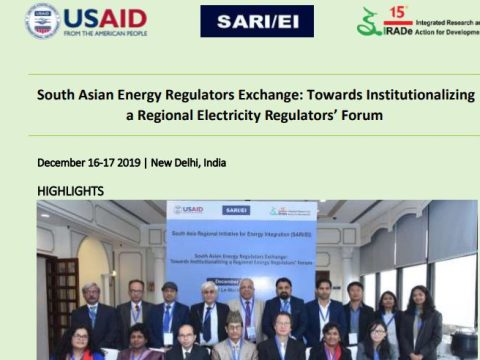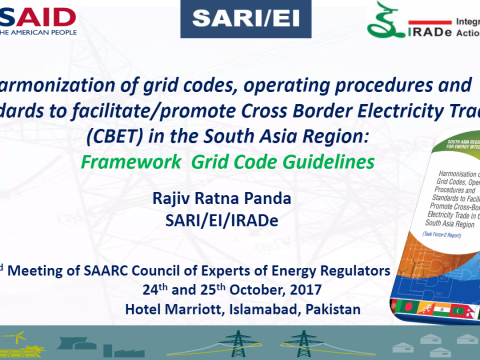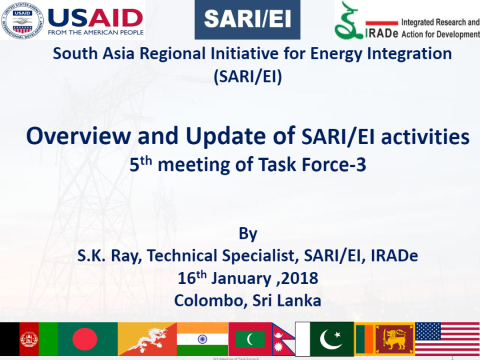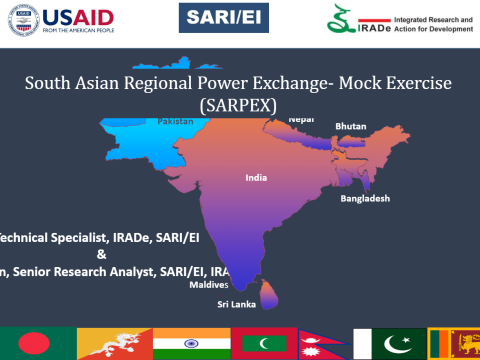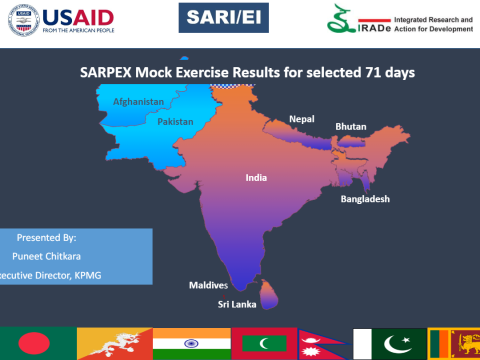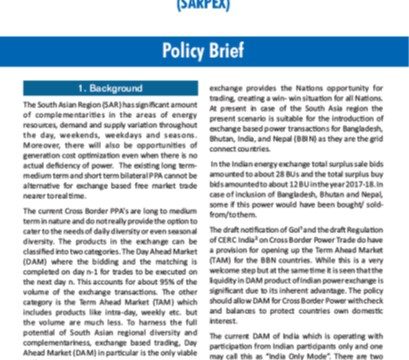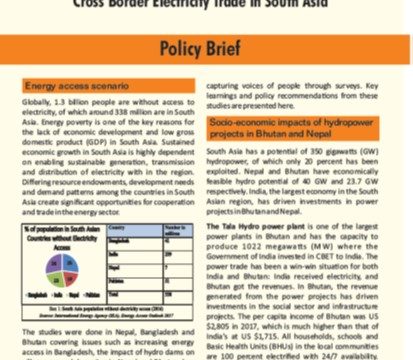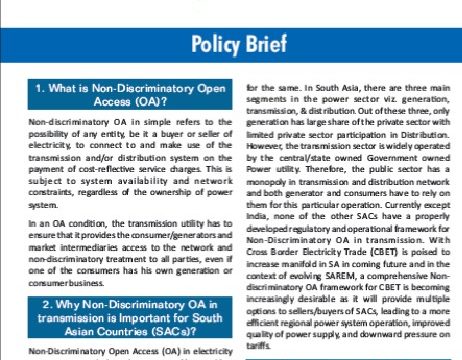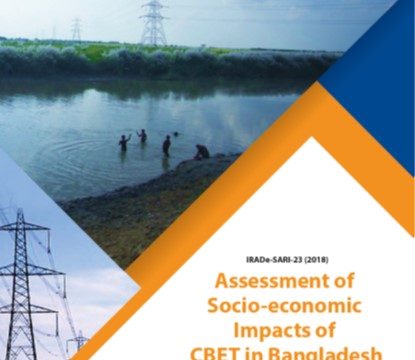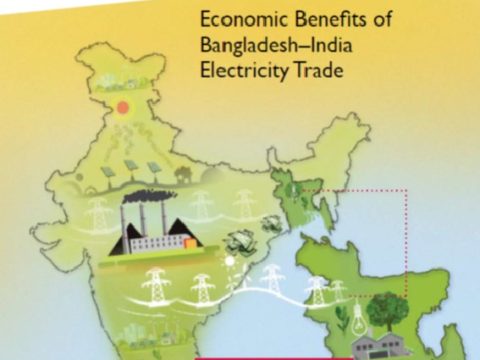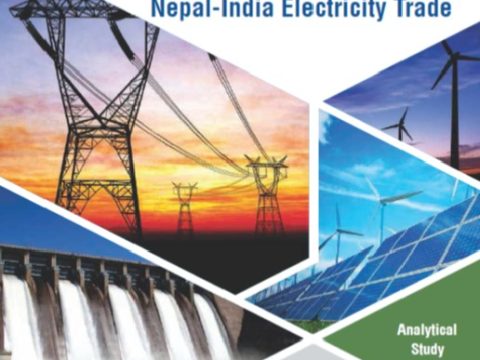Regional Power Trade and Markets
April 10, 2022
Integrated Research and Action for Development (IRADe), under the The USAID SARI/EI program organized a "South Asian Electricity Regulators' Exchange: Towards Institutionalizing a Regional Energy Regulators’ Forum" on 16th and 17th December in Delhi, comprising Chairpersons, members and senior delegates from Bangladesh, Bhutan, India, Nepal and Sri Lanka.
March 22, 2022
Presentation- Key Findings on Harmonization of grid codes,operating procedures and standards to promote/facilitate CBET in South Asia-Volume-III Report-Rajiv Panda-SARI-EI-IRADE
March 21, 2022
Experiences and Learnings from Competitive Power Market (power trading and exchange) Development in South Asian:-Approach for developing Competitive Regional Power Market in South Asia Mr. Rajiv Ratna Panda, IRADe/USAID SARI/EI, India in the SAARC Training Workshop on “System Operation and Settlement Mechanism, Cross Border Trade/Regional Power Market in South Asia”
March 21, 2022
Assessment and recommendation of commercial terms & conditions for Cross Border Electricity Trade (CBET) and suggesting the model Of Power Exchange in South Asian region.
March 21, 2022
To ascertain the feasibility of the South Asian Regional Power Exchange (SARPEX) with Bangladesh, Bhutan, India and Nepal (BBIN) as the participants.
March 21, 2022
The SARPEX Mock Exercise Project finds that basis the demand-supply and transmission conditions that prevailed in BBIN in FY’16, the DAM operation of SARPEX would benefit all the participating nations, resulting in the overall regional surplus of INR 323 Billion in a year, in both the modes.
March 10, 2022
The South Asian Region (SAR) has significant amount of complementaries in the areas of energy resources, demand and supply variaon throughout the day, weekends, weekdays and seasons. Moreover, there will also be opportunies of generaon cost opmizaon even when there is no actual deficiency of power.
March 10, 2022
Countries in the South Asia region, some of the poorest in the world, have low levels of per capita electricity consumpon. In 2012, it was 119 kWh in Nepal (WDI, 2015), when only 76.3 per cent of its populaon had access to electricity. In India, per capita electricity consumpon in 2013–14 was 957 kWh with about 21.3per cent of its populaon without access to electricity in 2012.
March 10, 2022
Globally, 1.3 billion people are without access to electricity, of which around 338 million are in South Asia. Energy poverty is one of the key reasons for the lack of economic development and low gross domesc product (GDP) in South Asia.
March 10, 2022
Grid code is a technical document containing rules, procedures, guidelines, criteria and responsibilies to be complied by the users, owners and operators of the transmission system of a country. Grid codes are approved by a regulatory body in exercise of powers conferred to it under the relevant electricity act/legislaon.
March 10, 2022
Non‐discriminatory OA in simple refers to the possibility of any enty, be it a buyer or seller of electricity, to connect to and make use of the transmission and/or distribuon system on the payment of cost‐reflecve service charges. This is subject to system availability and network constraints, regardless of the ownership of power system.
March 10, 2022
Integrated Research and Action for Development (IRADe) is the implementing partner of the South Asia Regional Initiative for Energy Integration (SARI/EI) programme supported by the United States Agency for International Development (USAID).
March 10, 2022
Implementation of NDCs for Renewable Energy in Sri Lanka Addressing Gaps in Policies and Regulations
SLYCAN Trust wishes to thank our partners United States Agency for International Development (USAID), and Integrated Research and Action for Development (IRADe) for their valuable contribution to the research.
March 10, 2022
We are pleased to present the report, ‘Economic Benefits of Bangladesh–India Electricity Trade’, carried out under the South Asia Regional Initiative for Energy Integration (SARI/EI) project supported by USAID.
March 10, 2022
On the Nepal side, we thank our partners IIDS, Nepal, and Dr. Bishnu Dev Pant, Executive Director IIDS and Mr. Pramod Rijal, Economist, IIDS, in particular for the administrative and logistical support in organising the two stakeholder Workshops.

